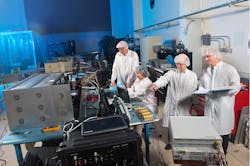NASA Glenn Experiments to Launch on ISS Resupply Mission
When the Cygnus spacecraft lifts off on its resupply mission to the International Space Station, it will carry three experiments designed at NASA’s Glenn Research Center in Cleveland.
NASA commercial cargo provider Orbital ATK is scheduled to launch its sixth mission to the International Space Station no earlier than Sunday, Oct. 16. Among other cargo, it will carry NASA Glenn’s Aerosol Sampling Experiment, Cool Flames Investigation and Spacecraft Fire Experiment-II (Saffire-II).
The Aerosol Sampling Experiment is the first air quality experiment to operate on the space station. It will provide data on the quantity and size of inhalable particles in the space station’s ambient air. High concentrations of inhalable particles can cause the crew respiratory and eye irritation. This experiment will improve understanding of cabin air quality and lead to enhanced air quality monitoring systems for future missions.
Cool Flames is an investigation into a phenomenon where some types of fuels initially burn very hot and then appear to go out, but actually continue to burn at a much lower temperature with no visible flames. Understanding cool flame combustion helps scientists develop cleaner, more efficient engines and fuels.
Saffire-II is the second in a series of experiments to ignite a large-scale fire inside an empty Cygnus resupply vehicle, after it leaves the space station, to improve understanding of fire growth in microgravity and safeguard future space missions.
A Sunday launch would occur at 8:03 p.m. EDT from NASA’s Wallops Flight Facility in Virginia, with a five-minute window. The launch will air live on NASA Television and the agency’s website beginning at 7 p.m.
For launch countdown coverage and more information about the mission, visit: http://www.nasa.gov/orbitalatk
For more information about NASA Glenn, visit: http://www.nasa.gov/glenn
